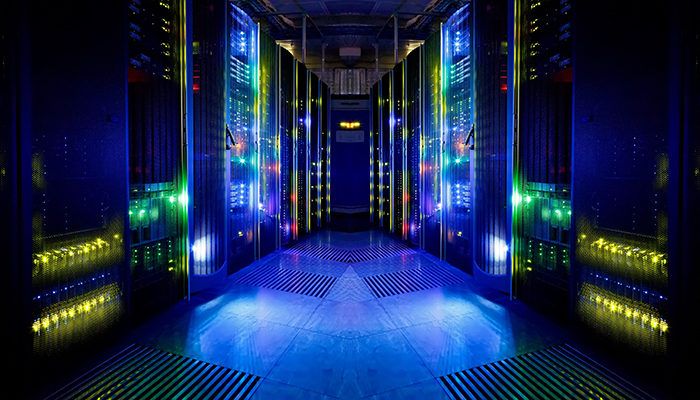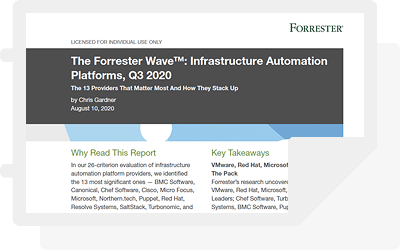Why Engage in Infrastructure Planning?
Very few of us are lucky enough to be one of the first few employees in a new organization. Those of you who are get to plan the infrastructure with a blank slate, and can focus all of your efforts on doing things right the first time. However, most of us have inherited an infrastructure that has at least a couple of components that we would do differently if we had the opportunity to do so. Making changes to your organizations existing infrastructure can be thought of as trying to redesign your house while you still live in it. If it isn’t done correctly you can inadvertently put your most prized possessions at risk.
This audience for this article is for those of us who know that we need to make changes to our infrastructure but are not sure where to start, or how to ask for funding to do so.
Map your Infrastructure to Business Success Metrics
The most important thing you can do to prepare for your infrastructure planning is to make sure you understand what your organization is trying to accomplish. This is a deeper dive than just understanding the mission statement. You need to be able to map infrastructure components and systems to organizational results. Talk to your senior leaders and see if you can find out what metrics they use to measure organizational success.
There are two concepts I use to do this:
Primary Driver – The infrastructure component that is directly responsible for enabling change in the business metric.
Secondary Driver – The infrastructure component(s) that primary drivers rely on.
A couple Examples:
A website (running on a web server) directly enables the organizational ability to process sales transactions. Because the web server relies on networking and data center facilities, they are considered secondary drivers.
The network allows call center employees to send / receive calls (remember endpoints are not infrastructure). The ability to receive calls affects # of new customers as well as customer retention rates. Therefore, PBX/ Phone system (including the network) is the primary infrastructure driver of # of new calls in this scenario, data center facilities, and servers are secondary drivers.
The best test for determining a primary / secondary driver is by asking the question:
“Does an investment in this component allow the organization (not the IT department) to do something it couldn’t do before?”
Keep in mind this is not an exact science. You could also argue that the servers running the phone system are primary drivers and others are secondary.
The main point here is to help you think about your infrastructure in terms of its ability to affect the business.
Here is one example of what that map could look like:
| Business Metric | Source(s) | Primary Infrastructure Drivers | Secondary Drivers |
|---|---|---|---|
| Sales Revenue |
|
|
|
| # of new customers |
|
|
|
Set Priorities around Primary Drivers
Setting infrastructure priorities is often the most difficult thing to do for organizations. After all each part of the infrastructure relies on all of the other parts, so it is all the most important, right?
Not exactly. In the 1990’s our infrastructure design goal was to build in as much redundancy as the organization could possibly afford. The more redundant the better. While additional redundancy is always beneficial, infrastructure is much more complicated than it was back then. Organizations simply can’t afford to take every component of their infrastructure to 99.99999 (5 nines) of reliability and remain profitable (except for some industries).
Only by understanding the primary infrastructure drivers of our organization, can we set priorities around our infrastructure investments. Let’s revisit our previous example:
If our online storefront is a primary business driver, then this is where we need to focus our planning effort(s). Do a deep dive to understand all of the infrastructure components that the storefront relies on. Answer questions like:
- What is current capacity (#of visitors, #transactions processed..etc)
- Is the infrastructure meeting capacity?
- How many servers / vm’s does the current configuration use
- How much storage is required?
- What is the expected utilization rates over the next 6-12 months
Consider Alternative Options for Secondary Drivers
As the pace of change continues to increase, it is more important than ever that organizations develop deep talent in areas that drive their business. Secondary drivers are great areas to consider how you could leverage outside help. Ask yourself questions like:
- Does our online storefront really need to be in our datacenter?
- What would happen if we moved it to the cloud? Would that reduce complexity?
- Do I have business partners that could host my servers?
- Can I increase performance and reliability of these secondary drivers by leveraging specialized consulting firms?
- Are there other areas in my organization (parent/sister companies) that are experts in these secondary areas?
Draft a 1 year infrastructure improvement plan
Now that you know what components of your infrastructure are most effective at driving business results, you can begin to put together a plan. There are a few key areas in infrastructure plans that senior executives really like to see.
Plan / Executive Summary
I’ve heard so many infrastructure managers say “I’m not writing an executive summary because it doesn’t say anything important” I always respond to that statement with “Well, this time lets write something important in it”
The executive summary isn’t really a summary of the whole plan. It is your elevator sales pitch. Executive time is valuable. Most execs will pick up a planning document, glance at the first page, see if anything catches their eye, and then turn to the last page, which has a grand total of how much money you want. If you didn’t get the first two sentences of the summary right, you are relying 100% on your relationship with that executive for plan approval. He or she will make the decision to fund the plan based on their perception of your value in the organization. If this is your first big project, you don’t stand a chance of getting it approved without a solid executive summary.
An opening sentence like “This is a plan to increase our sales capacity by x% by making an investment in our X infrastructure. This additional capacity has the potential to increase gross revenue by y amount of money.
Even if your numbers are a little off, most execs will say “this infrastructure guy/gal has their head in the right place, I’m going to take a look at this plan.”
Priority Investment Areas
This section contains “the ask.” How much investment do you need and what are you going to do with it. Talk about your primary drivers and how these investments have the potential to improve the organization. This area should also include summary details of what you need purchase. Number of servers, storage capacity, and data center renovations…etc.
Change Opportunities
What parts of the infrastructure should be changed, but require little to no investment? Things like operational procedures and repurposing underutilized or misconfigured components go here
Efficiency Opportunities
What do you plan to stop doing in the infrastructure? What technologies are no longer needed and should be decommissioned. What legacy gear has been causing problems and how will it be removed from the infrastructure.
Draft a Longer 3-5 Year Infrastructure Plan (Every Year)
What you say, draft a 3-5 year plan every year? What sense does that make?
Before we answer that question let’s talk about why we are creating our first 3-5 year plan AFTER finishing a 1 year plan.
You will learn a lot about planning as well as your organization that first year. Take the time to understand what worked and what did not. Many infrastructure managers will try to change too much too quick. Alternatively, they will realize that they got too far into the weeds in that first plan and got very overwhelmed.
Use the information and experience gained in that first year to prepare for a larger, longer plan that sets a direction further out into the future.
So why do we want to draft a 3-5 year plan every year? Because everything changes. Organizational goals change, technologies change, staff expertise changes. IT departments must be able to adapt to those changes. You have to be grounded in the present, but have an eye towards the future. By adjusting our plan every year, you’ll do a much better job of knowing what needs to be done now, to align to that 5 year vision.
You may even decide you want to try a new approach to planning your infrastructure. I say, “That’s great!” The point is that you learn from your experience, adapt, and execute a planning process that delivers results for your organization.







